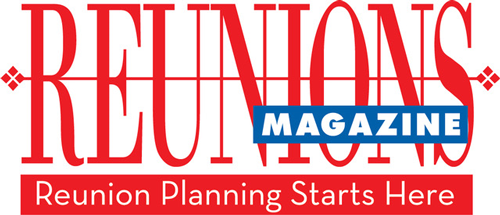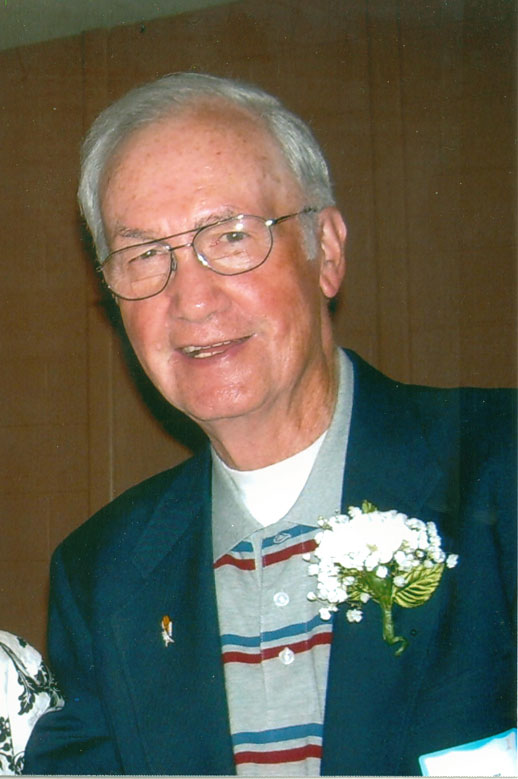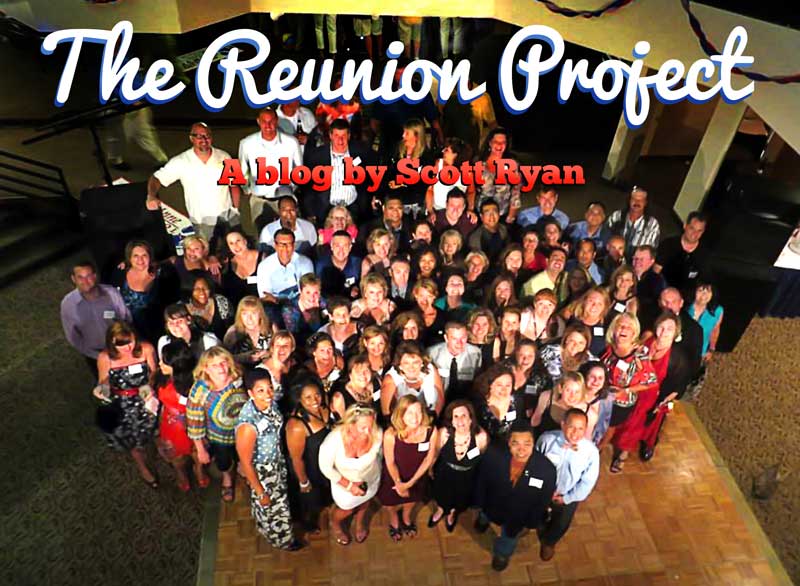Click on the blue box that says “NEXT” (on the right) to read more.
Finding 100% of the class is a lofty goal
by Dave Conlin
Finding classmates for your high school reunion
Our alumni association is an all-volunteer group for a public school district with two high schools. We came from a mixture of junior high and parochial schools. There are a lot of ties — family, friends and other relatives with shared history and a contrived sports rivalry between the two schools.
I’ve been developing our alumni association since 1992. My work has been identifying and locating members from each class of two high schools, Corning and Painted Post High Schools, Corning, New York. It is not an easy task and is never completed because people move frequently.
I update an average of 15% of our entire alumni database every year. It is now full-time work and I struggle to maintain 87% located or accounted for, including known deceased.
Keeping a mailing list up-to-date is not a one-time task. On average, over 30% of alumni from every class in our database have a new address for each successive five-year reunion. If it has been over 10 years since your last class reunion, it’s likely that well over half of your classmates have new addresses.
Here is a sample monthly report of our alumni. Note the numbers of address changes over the years – and this is average:
FOR EHS 1971: There are 304 in your class, with 274 located; 58 have email. Addresses continuously updated – 27 address changes in 1995, 35 in 1996, 16 in 1997, three in 1998, 13 in 1999, 38 in 2000, 36 in 2001, 19 in 2002 and three since January 1, 2003. One classmate requested “DO NOT CONTACT” status. 18 are known deceased and 11 missing. 02-02-03.
I maintain over 200 separate class and club directories for our alumni and provide mailing labels for most of our reunions. Our alumni association is funded by paid subscriptions to access class directories. We’re not funded by outside sources.
Searching for missing alumni
When searching for classmates, it’s difficult to know where to turn. Which Mrs. Smith is the Butler boys’ mom? The class just before or after yours may have a sibling to a sister in your class with a common last name and no clue who to contact. How could you know Mrs. Miller is Debbie Wright’s mom?
The first consideration for most schools involves locating present or former residents. In most high schools, there were siblings in several classes and often parents, spouses, children, aunts, uncles and cousins were also alumni.
In reality, the easiest place to look is local relatives. If you work with other class committees, each benefits from contacts to fill in addresses from your missing lists. Contact located relatives in other classes to ask for help.
It was a great effort to cross-reference our alumni files, but now I know who to call when nomads relocate. I can often locate them with one or two quick phone calls to family members. I update the entire family with every contact and one call often updates addresses and other details for half the family.
Daily newspapers give significant clues. I harvest much contact information by reviewing obituaries, wedding and birth announcements, campus and military reports and the local section. The obituary survivors list includes family contacts and often the survivors’ city and state; many of them may be alumni.
I maintain an updated “missing list” on our website and often receive calls or email from missing alumni who see their names! Alumni from all classes see missing lists and send updates for relatives and friends from other classes or the other school.
Many class reunion committees use internet searches. Many commercial companies charge to find missing classmates. The biggest problem is the volume of duplicated names. Just try to find Jim Smith. Which one of the several thousand is “yours?” I have hundreds of duplicated names in my database and must be careful to update the right one.
I see no benefit to doing most searches online without additional personal information, unless you’re searching for an extremely rare name. I’ve turned to the internet as a last resort, but find I often make as many as 100 calls to different “NOT IT” people with the same name before I find “IT.” Then the conversation always seems to begin with, “Holy cow, how did you ever find me?” Most of my online searches have been unsuccessful.
Commercial alumni directories online include classmates.com, gradfinder.com, highschoolalumni.com, worldalumni.net and about a dozen others. Multiple lists are incredibly fragmented and from my experience there is simply too much wrong information to make them worth reviewing. My research time is much more productive when I ignore commercial hodgepodges as sources. They may contain a clue or two in the pile, if you take the added time to dig. Other sources are generally faster.
I struggle to convince committee members to contact a name in our local phone book before assuming it’s the right person. It is hard to imagine how many wrong “John Does” are invited to reunions for schools they never heard of. Many paid commercial companies provide alumni information for the wrong person. You must make contact to confirm it is the right person. That means speaking to them or getting a written response. Many same-name people simply toss mail intended for someone else so you never know why your classmate did not respond.
My standard closing to our own alumni in my ongoing communications applies to us all.
Please be sure to join your class for your next reunion. Each reunion may be the last opportunity to say hello to some old pal.
About the author
Dave Conlin, EHS class of 1971 (Corning NY), founded the Corning-Painted Post High School Alumni Association in 1992 and has maintained the complete records for all alumni and staff of two local high schools ever since. He spearheaded many alumni association developments and heads a large team of volunteers devoted to many alumni-related projects.
Family tree searches produce reunion stories
The president of Philadelphia’s African-American Genealogical Group, John T. Logan, still returns to central Kentucky to search family tree branches.
Logan, 51, was born near Muncie, Indiana, but from the age of just a few months he grew up on a farm in Garrard County, Kentucky, where his mother’s family lived.
“I think there have been changes among black people toward their family histories,” Logan said. “Alex Haley made a major impact on black people, if not on the world” with his novel Roots. “He displaced some myths about black people having no history in this country by proving he could research and find his history.”
Inspired by Haley’s work, Logan began searching for lost chapters of his family’s history. It proved difficult, but he has traced his maternal line back six generations. His family database now contains more than 5,000 names associated with the Logans, Rays and Kennedys of Garrard and surrounding Kentucky counties.
Logan’s paternal grandparents died before he was born and his maternal grandfather, who died when Logan was 10, was orphaned at about age 6, having lost his father, mother and older sister during an early 1890s epidemic. Little family history was saved.
Logan’s discoveries are seeds for family history tales he tells at his reunions. His great-grandfather, Mason Logan, was a member of the 6th US Colored Cavalry at Camp Nelson, Kentucky, and was buried in a country church graveyard in Buckeye community, Garrard County. “I found his military headstone one evening while visiting and doing research, but have been unable to find out any more beyond his Civil War records and his birth date.”
Logan learned many of his mother’s ancestors were slaves on the infamous Kennedy Plantation near Paint Lick in Garrard County, which many historians believe was the setting for Harriett Beecher Stowe’s powerful antislavery novel, Uncle Tom’s Cabin.
“The difference in African-American genealogy many times is we have to parallel our research to the slave owner,” Logan explained. “We have to know their genealogy almost as well as our own, because through their travels, ownership, transactions, wills, farms they owned and where their family came from, we may discover more information about ourselves.”
Contact John T. Logan or the African-American Genealogical Group of Philadelphia, at [email protected].
Taken from a column by Byron Crawford, Courier Journal, Louisville KY.





